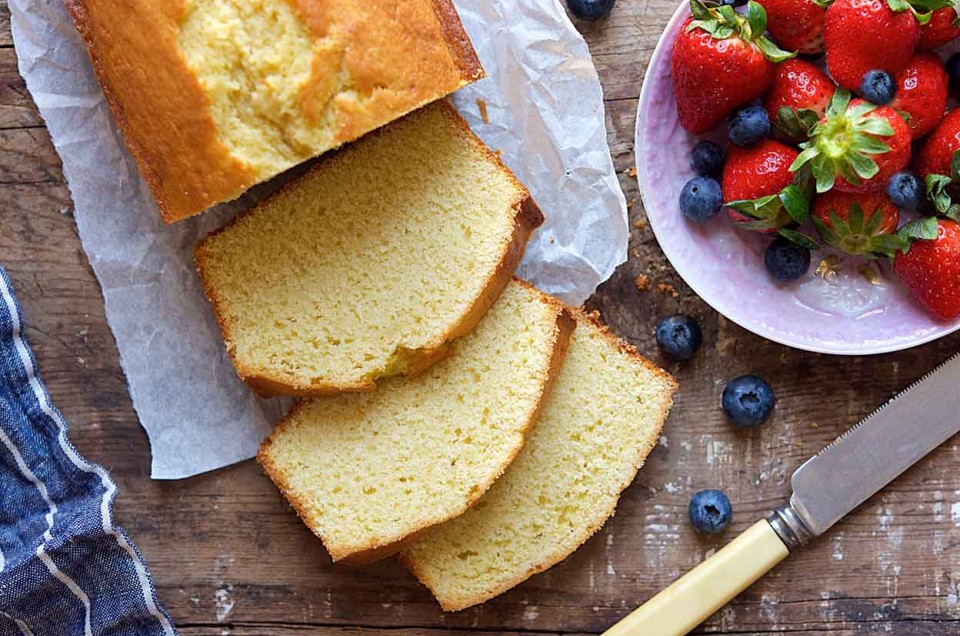King Arthur's Original Pound Cake
Pound cake is the original, or "grandmother," of all butter cakes. This particular pound cake is incredibly rich; fortunately, a very thin slice goes a long, long way.

Pound cake is the original, or "grandmother," of all butter cakes. This particular pound cake is incredibly rich; fortunately, a very thin slice goes a long, long way.

Preheat your oven to 350°F. Lightly grease a 9" x 5" loaf pan.
In a large bowl, beat the butter until very light.
Beat in the sugar gradually and then the eggs, one by one. Scrape the bottom and sides of the bowl, and beat until the mixture is very light and fluffy.
In a separate bowl, whisk together the flour, baking powder, and salt.
In another small bowl, whisk together the milk, alcohol of your choice, and extract.
Alternately add the wet and dry ingredients to the butter/sugar/egg mixture, starting and ending with the flour. Stir to combine after each addition.
Pour the batter into the prepared pan, smoothing the top.
Bake the cake for 60 to 65 minutes, until it springs back when pressed lightly in on top, and a long toothpick or cake tester inserted into the center comes out clean. If the cake appears to be browning too quickly, tent it with foil for the final 15 minutes of baking.
Remove the cake from the oven, and loosen its edges. Wait 5 minutes, then carefully turn it out of the pan onto a rack to cool.
To dress the cake up a bit, sift a shower of confectioners' sugar over the top just before serving.
Store, wrapped in plastic, for a day or two before serving. Wrap well and freeze for longer storage.

Popular in recipes
Popular in products

